While Subaru was founded in 1955, Subaru's history begins over a hundred years ago, when we launched our Aircraft Research Laboratory under the name of Fuji Heavy Industries Ltd. The goal was to make machines that could soar across the sky. Since then, our relentless spirit to make a machine fly has inspired us every step forward. Subaru became one of the first few companies to market a full-time All-Wheel Drive (AWD) passenger car in 1986. By combining a turbo-charged engine with an AWD system, we also pioneered the market for high-performance station wagons. Over the years, we continuously improve on our AWD system. Our hallmark Symmetrical AWD system enhances safety and optimizes driving pleasure. While we've expanded from manufacturing planes to cars, one thing remains unchanged. Our pursuit of safety. Cars transport people, but Subaru transports the ones we love. This is why we are committed to perfecting dependable vehicles. Never taking shortcuts or the easy way out. Precision is in everything we do.
Today, we've become one of the world's leading automakers. Best known for our engineering, safety, reliability, and functionality, Subaru vehicles are widely known as the "driver's cars," offering superb handling through the pairing of our core technologies: Symmetrical All-Wheel Drive and Boxer Engine. Our devotion to our customers has taken us from manufacturing machines to inspiring confidence in motion with smiles of love.


Subaru Corporation (formerly known as Fuji Heavy Industries Ltd.) was established.
The first prototype 4-wheel passenger vehicle P-1, later known as the Subaru 1500, was completed.
Prototype K-10 was completed.
Subaru 360 was released. This passenger car became a milestone in our automobile history and enjoyed tremendous popularity for more than a decade.
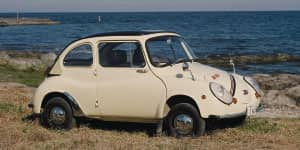
The Subaru Sambar truck was released.
2nd generation of the Subaru Sambar was released.
Subaru 1000 was released as the first compact passenger car powered by the Boxer Engine. It also offered driving stability, a comfortable interior and the front-wheel drive platform.
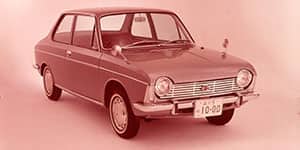
Subaru R-2 was released, replacing the Subaru 360 and offering a refined style and roomy interiors that could comfortably seat four people.
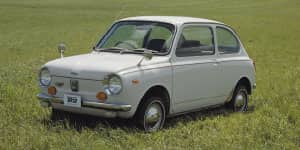
Subaru Leone was released.
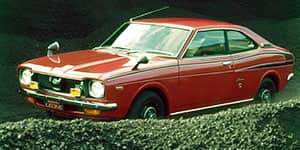
Subaru Leone, the first Four Wheel Drive commercial vehicle was released.
The Subaru Rex
was launched as the succesor to the Subaru R-2. It was a hit thanks to its youthful dynamic image and traditional minicar features, including superior handling, driving stability, riding comfort, and fuel economy.
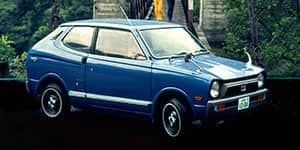
The 3rd generation Sambar was released, with a switch from an air-cooled engine to a water-cooled one.
The Subaru Brat was released, based on the Leone 4WD but with a two-seater cabin and a cargo bed at the rear.
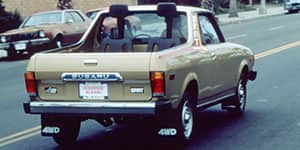
The 2nd generation Leone was released with a larger body size and 1,800cc engine.
The 2nd generation Rex was released with a change from a rear-engine, rear-wheel drive platform to a front-engine, front-wheel drive platform. This helped to overcome issues related to interior space, giving it a wider wheel base and the largest body size at the time in the minicar class.
The 4th generation Sambar was released as a minivan model.
The Subaru Domingo one-box wagon was released, it not only accomodated seven passengers in a compancy body but also offered both swivel seats and folding seats.
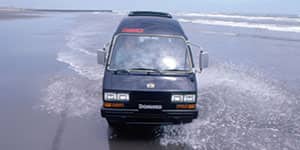
The Subaru Justy was released.
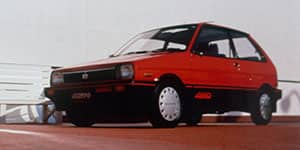
The 3rd generation Subaru Leone was released with a larger body size and a design based on flat, straight lines.
The Subaru Alcyone was released with its hallmark style designed to evoke the image of the aerodynamic shape of a hawk or an eagle.
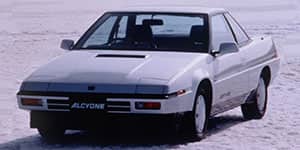
The 3rd generation Rex was released with more interior space and upgrades to the gearbox
Subaru Tecnica International Inc. was established as a subsidiary to undertake motorsports activities and the development and sales of specially-designed sports parts.
The Subaru Legacy was launched, marking Subaru's first step into the 2.0-litre automobile industry.
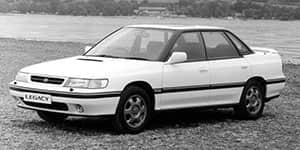
The 5th generation Sambar was released with a full model change.
The Subaru SVX was released, replacing the Alcyone as the luxury high-performance coupe that could handle any road surface.
The Vivio was launched, featuring Subaru's first newly designed body and a relatively low centre of gravity that helped to improve its driving stability.
The Subaru Impreza was launched in two versions: a 4-door Sedan and a Sports Wagon. The Impreza's engine, suspension, AWD system, and packaging followed those of the Legacy, and the high-performance driving and feeling of quality were further enhanced.
The 2nd generation Subaru Legacy was released, offering performance and interior space that rivalled more premium models, despite its compact class.
The Subaru Outback was launched with high ground clearance and a premium yet tough looking exterior.
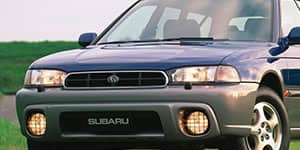
The 2nd generation Domingo was released with a full model change.
The Subaru Forester was launched, combining the strong points of a SUV and a passenger car as a vehicle that featured the best of both genres.was launched with high ground clearance and a premium yet tough looking exterior.
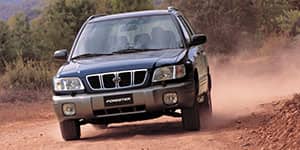
The Pleo was launched as a perfectly balanced package of performance, safety, utility and eco-friendly driving alongside with its lightweight and compact frame.
The 6th generation Sambar was released with a full model change.
The 2nd generation Subaru Impreza was released, it included features such as a new turbo engine, a new body with Ring-Shaped Reinforcement Frames and improved impact safety.
The Traviq was launched as an easy-to-drive compact seven-seater that offered supeme interior comfort in a streamlined package.
The 2nd generation Subaru Forester was released with a full model change, fusing the benefits of both the SUV and passenger car.
The 4th generation Subaru Legacy was released with a full model change, featuring a more sporty look and a comfortable interior.
The 3rd generation Outback was released, featuring high ground clearance and excellent on-road driving performance.
The Subaru R2 was launched, featuring a stunning design coupled with a streamlined package, excellent fuel economy and crash safety, and agile performance.
The Subaru B9 Tribeca was released as a seven-seater featuring a dynamic exterior design contrasted with a sophisticated interior design that accentuated stylish comfort and safety.
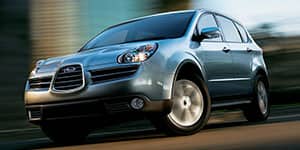
The Subaru R1 was relased as a 3-door compact car with streamlined packaging for private use.
The Subaru Stella was launched as a mini-car that places an emphasis on a spacious interior, good fuel efficiency and smooth acceleration.
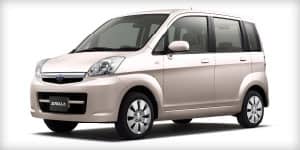
The 3rd generation Subaru Impreza was released with a full model change that offered both comfort and safety.
The Subaru Exiga, a seven-seater for panorama touring, was launched.

The Subaru Dex, a new compact car, was launched with a focus on daily ease-of-use and a unique design.
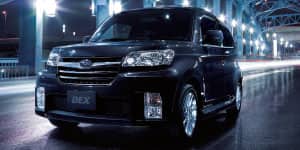
The 5th generation Subaru Legacy was released with a full model change, providing greater comfort and eco-friendly driving.
The 4th generation Subaru Outback was released with a full model change, with enhanced driving performance and safety.
The 2nd generation Pleo was released.
The Lucra was launched as a passenger car designed to fit in with any lifestyle with its spacious and open cabin and polished design.
The Subaru Trezia
was released as a new minicar with Subaru's renowned wagon styling.
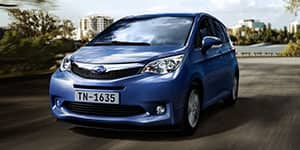
The 2nd generation Subaru Stella was released with a spacious interior, easy handling and outstanding fuel efficiency.
TheSubaru XV was introduced as a vehicle perfectly suited to exciting, lively, yet stress-free use in the city.
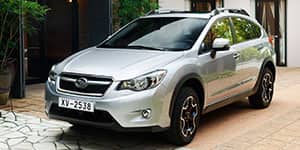
The 4th generation Subaru Impreza was released with a full model change.
Subaru commemorated the 40th Anniversary of its AWD vehicles.
The 4th generation Subaru Forester was released with greater enhancements to its driving, safety and environmental features.
The first Subaru XV was produced at a Malaysian assembly plant of Tan Chong Motor Assemblies Sdn. Bhd.
The Subaru Levorg was introduced as a sports tourer that offers both driving enjoyment and practical touring abilities.
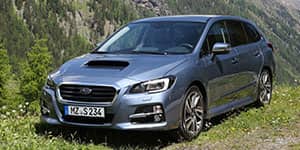
The origin of the Subaru name and logo dates back to the 1950s, when Kenji Kita was the first president of Subaru Corporation, formerly known as Fuji Heavy Industries Ltd. Mr. Kita was passionate about one thing: producing passenger cars. And so, in 1954, we did just that. We produced our first passenger prototype, the P-1.
Mr. Kita was adamant that, "Japanese cars should have Japanese names." After several name proposals, Mr. Kita named it "Subaru," a beautiful Japanese name taken from the name of the star cluster in the Taurus constellation. Only six of its stars are visible to the naked eye, but about 250 bluish stars can be seen by telescope. In the West, that same cluster is called Pleiades. In China, Mao. In Japan, Subaru, which means to govern, gather together, or unite. In Japan, it also goes by the name Mutsuraboshi, translating to "Six Stars", which often appears in very old Japanese documents such as the Kojiki and Manyoshu, and literature such as Makura-no-soshi. It's clear that this constellation was well-loved in Japan in ancient times. Fittingly enough, Fuji Heavy Industries Ltd. was formed by the merger of six companies. From that moment on, the new corporation adopted the "Subaru" cluster of stars as the official logo for its line of cars.

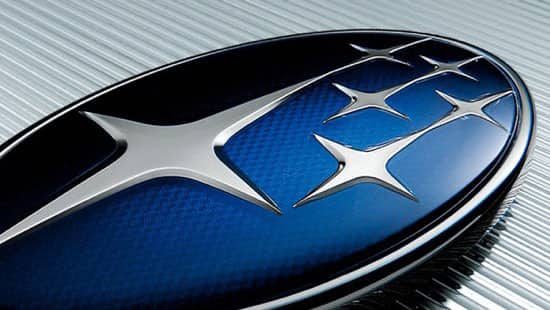
There's no better way to experience a Subaru.
Locate the nearestExperience Subaru performance from behind the wheel.
Book one todaySee detailed specifications and explore helpful information at your leisure.
Request now